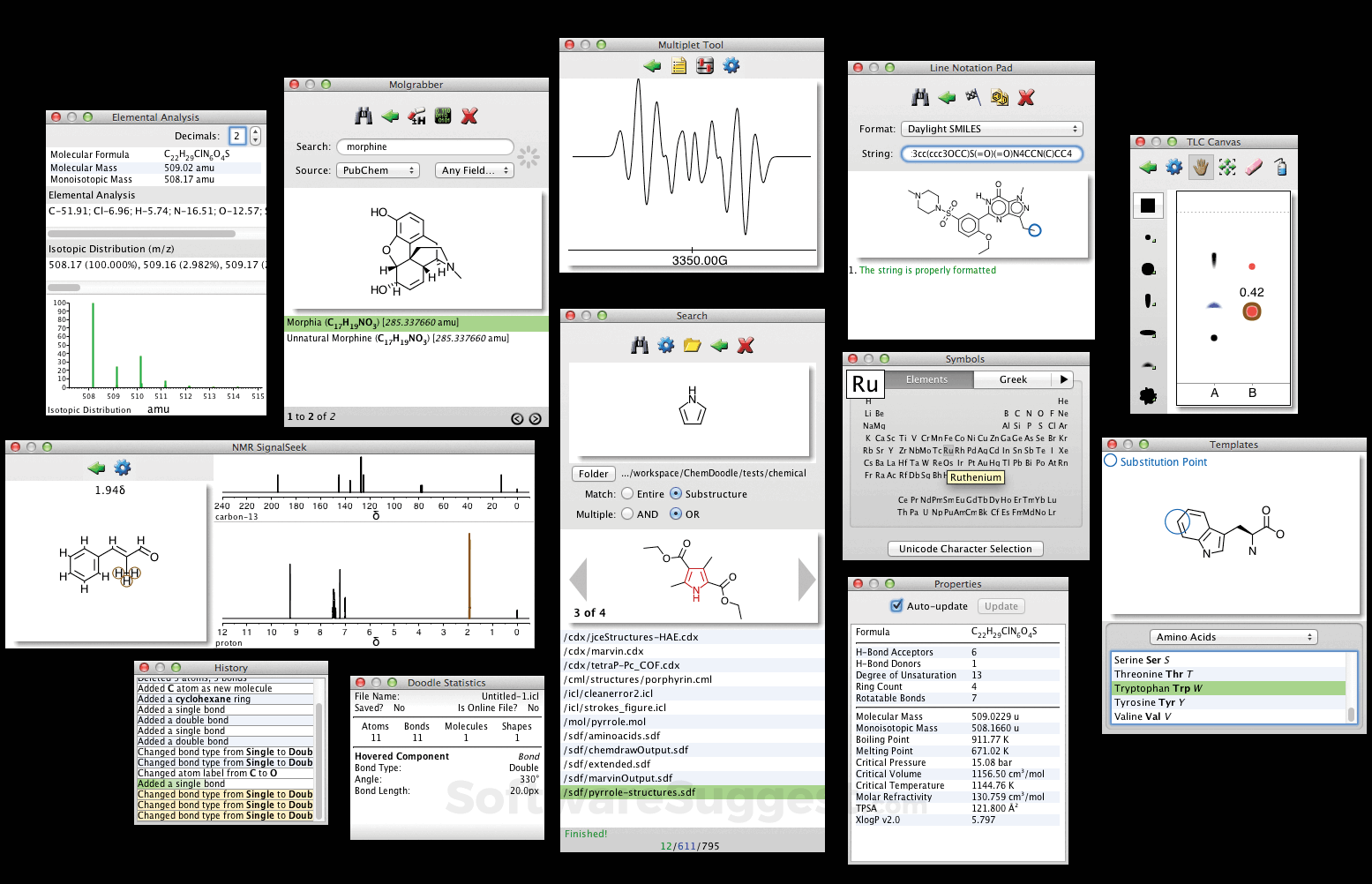

#Chemdoodle help formal charge update#
To overcome these interferences, the SuperPred update (SuperPred II) does not only consider 2D similarity methods but also fragment and 3D similarity searching. For instance, the molecular size of a compound can affect the similarity calculations as well as a folding of fixed-length bit strings which can result in the negligence of functional and structural features.

Although 2D fingerprints are widely used for various applications like virtual screening, similarity searching and clustering, several problems can occur. Among others, topological descriptors like 2D fingerprints ( 5) or BCUT descriptors ( 6) are often applied in similarity searching. Various 2D methods have been developed to search for similarity between compounds ( 4). The established ‘similarity property principle’ ( 2) is based on the assumption that structurally similar molecules exhibit similar biological activity ( 3). Therefore, comparing the drugs’ structural and physico-chemical features by means of ATC codes offers a possibility to gain knowledge for drug repositioning and predicting new medical indications as well as classifying yet unclassified compounds. Drug utilization can be investigated using the ATC classification system. This system is divided into several hierarchical categories differentiating between anatomical, therapeutic, pharmacological and chemical properties ( 1). The Anatomical Therapeutic Chemical (ATC) classification system of the World Health Organization (WHO) is currently the most prevalent system to characterize drugs.
#Chemdoodle help formal charge registration#
SuperPred is publicly available without registration at. For query compounds with sufficient structural similarity, the web server allows prognoses about the medical indication area of novel compounds and to find new leads for known targets. The prediction is improved by 7.5% to a total accuracy of 75.1%. The retrospective prediction of a drug class (ATC code of the WHO) allows the evaluation of methods and descriptors for a well-characterized set of approved drugs. In addition, the effect of different fingerprints on the prediction was examined. The 3D similarity as well as the occurrence of fragments and the concordance of physico-chemical properties is also taken into account. Apart from the addition of quantitative binding data and the statistical consideration of the similarity distribution in all drug classes, new approaches were implemented to improve the target prediction. Since the first release of this server, the number of known compound–target interactions has increased from 7000 to 665 000, which allows not only a better prediction quality but also the estimation of a confidence. The SuperPred web server connects chemical similarity of drug-like compounds with molecular targets and the therapeutic approach based on the similar property principle.


 0 kommentar(er)
0 kommentar(er)
